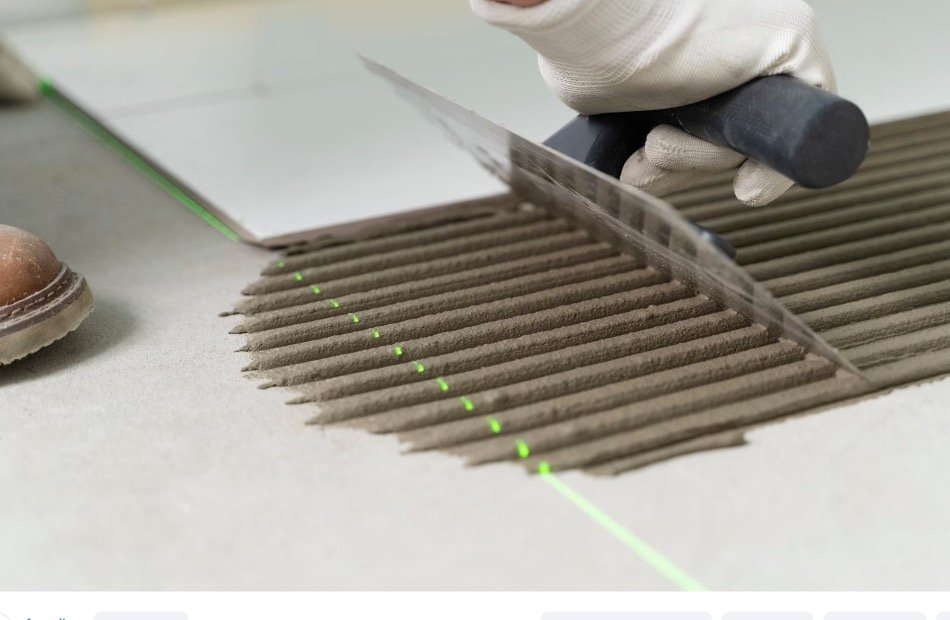Refinancing your home can be a great way to achieve a lower interest rate, pay off your mortgage sooner, or access cash for home improvements or debt consolidation. Essentially, mortgage refinance involves replacing your existing home loan with a new one, ideally with more favorable terms. While it is a popular option for homeowners, it can also be an overwhelming process, with many important factors to consider. Therefore, it is important to approach the process with confidence and a clear understanding of what to expect.
The benefits of refinancing your home include the opportunity to save money on interest rates, lower your monthly payments, or shorten the length of your loan term. Moreover, if you have built equity in your home, you may be able to take advantage of cash-out refinancing, which allows you to borrow against the equity you have accrued in your home. Ultimately, refinancing can help you achieve your financial goals and provide greater flexibility in managing your budget.

However, the decision to refinance your home should not be taken lightly. There are many factors to consider, such as your credit score, your current interest rate, and your home’s appraised value. Additionally, you will need to navigate the process of applying for a new loan and paying closing costs. This article will provide a comprehensive guide to refinancing your home with confidence, covering all of the important factors and considerations that you need to know.
Understanding Your Home Equity
Home equity is the difference between the current market value of your home and the amount of money you still owe on your mortgage. It represents the portion of your home that you actually own outright and can be used as collateral for a loan or line of credit. Understanding your home equity is crucial when refinancing as it determines how much money you can borrow and what type of interest rates you will qualify for. In most cases, lenders require a minimum of 20% equity in your home to consider refinancing.
The importance of having enough equity to refinance cannot be overstated. If you don’t have enough equity, you may not be able to refinance at all or may only be able to do so at a higher interest rate. Additionally, having enough equity can help you get a better interest rate and lower monthly payments, which can save you thousands of dollars over the life of your loan.
Interest Rates & Closing Costs
Interest rates play a crucial role in refinancing. A lower interest rate can lead to significant savings over the life of your loan, as it can reduce your monthly payments and the total amount of interest you’ll pay. However, you need to make sure that refinancing makes financial sense before moving forward. This means calculating the total cost of refinancing, including any fees like closing costs, and comparing it to the potential savings from a lower interest rate.
Closing costs are the fees associated with refinancing, such as appraisal fees, credit report fees, and title insurance fees. These costs can be quite high and may add up to several thousand of dollars, which is why it’s important to factor them into your decision-making process. Your lender is required to provide you with a Loan Estimate that outlines all of the costs associated with refinancing. Make sure to review it carefully and ask questions if anything is unclear. Some lenders may offer to roll the closing costs into the new loan, but this means you’ll be paying interest on those costs for the life of the loan, so it’s important to factor that into your decision as well.
APR and Credit Score
Definition of APR and how it differs from interest rate:
APR stands for Annual Percentage Rate, which is the total cost of the loan for a whole year expressed as a percentage of the loan amount. APR includes not only the interest rate but also other charges such as origination fees, points, and closing costs. On the other hand, the interest rate is the cost of borrowing the principal amount only. So the APR is generally higher than the interest rate because it considers all the expenses associated with the loan.
Explanation of how credit score affects APR and refinancing options:
Credit score is a critical factor that lenders consider when deciding whether to approve a loan application and what interest rate to offer. A higher credit score implies a lower risk for the lender and thus lower APR. On the contrary, a lower credit score may result in a higher APR or even rejection of the loan request. Therefore, it is crucial to maintain a good credit score by paying bills on time, keeping credit card balances low, and avoiding applying for too many new credits in a short period.
Loan Term & Debt-to-Income Ratio
Explanation of how loan term impacts monthly payment and total interest:
Loan term is the length of time you have to repay the loan. The shorter the loan term, the higher the monthly payments but the lower the total interest paid over the life of the loan. For instance, a 15-year mortgage will have higher monthly payments than a 30-year mortgage but will save you thousands of dollars in interest in the long run. On the other hand, a longer loan term means lower monthly payments but higher interest charges.
Definition of debt-to-income ratio and its importance in the refinancing process:
Debt-to-income ratio (DTI) is the percentage of your monthly income that goes toward paying debts such as credit card bills, car loans, and other mortgages. DTI is a critical factor that lenders consider when deciding whether to approve a loan application and what interest rate to offer. A lower DTI ratio indicates that you have enough income to cover your debts and are capable of repaying the loan on time. Typically, the maximum DTI ratio for qualified mortgages is 43%, and having a DTI ratio below that number is a good sign to lenders of your financial health.
Equity Cash-Out
Equity cash-out is a type of refinancing in which you borrow against the equity in your home. Equity refers to the difference between the value of your home and the amount you owe on your mortgage. With equity cash-out, you can access some of that equity and use the proceeds for other expenses, such as home improvements, debt consolidation, or college tuition fees. This can be a great way to leverage the value of your home to finance other goals.
The potential benefits of equity cash-out include:
1. Lower interest rates: Cash-out refinancing often comes with lower interest rates than credit cards or personal loans.
2. Tax-deductible interest: If you use the money from cash-out refinancing on home improvements, the interest you pay on the loan may be tax-deductible.
3. Debt consolidation: By using the proceeds of cash-out refinancing to pay off high-interest debts, you can save money on interest charges and simplify your finances.
However, there are risks associated with cash-out refinancing as well. One of the main risks is that it increases the amount you owe on your mortgage and decreases the equity in your home. This means that if property values drop, you may owe more than your home is worth, which is referred to as being “underwater.” It is important to carefully consider whether cash-out refinancing is the best option for you and to weigh the potential benefits against the risks.
Fixed vs. Adjustable Rates
When refinancing your home, you will need to decide between fixed and adjustable rates. Fixed rates remain the same for the entire term of the loan, while adjustable rates can change over time. Each option comes with its own set of pros and cons, and the decision will largely depend on your individual financial situation.
The pros of fixed rates include:
1. Predictability: With a fixed rate, you always know what your mortgage payment will be every month, which can make budgeting easier.
2. Stability: If interest rates rise, your rate will remain the same, which can provide stability in uncertain economic times.
The cons of fixed rates include:
1. Higher initial rates: Fixed rates typically start out higher than adjustable rates, which can mean higher monthly payments.
2. No flexibility: If interest rates drop, you will not be able to take advantage of the lower rates without refinancing.
The pros of adjustable rates include:
1. Lower initial rates: Adjustable rates typically start out lower than fixed rates, which can mean lower monthly payments.
2. Flexibility: If interest rates drop, your rate will also drop, which can save you money over time.
The cons of adjustable rates include:
1. Uncertainty: Your monthly payments can fluctuate depending on changes in interest rates, which can make budgeting more difficult.
2. Risk: If interest rates rise significantly, your monthly payment could increase substantially, which could put a strain on your budget.
When deciding between fixed and adjustable rates, it’s important to consider factors such as how long you plan to stay in your home, your ability to handle the risk of fluctuating payments, and your overall financial goals. A mortgage professional can help you evaluate your options and choose the best one for you.
Refinancing Process: From Application to Closing
Refinancing is a process through which a borrower replaces their existing mortgage loan with a new one. This new loan could have different terms, lower interest rates, and reduced monthly payments. The refinancing process typically involves the following steps:
-
Application:
The borrower applies for a new loan by providing their personal and financial information to the lender. The borrower must also state their intentions for refinancing, such as lowering their monthly payments or reducing their interest rate.
2. Underwriting:
The lender evaluates the borrower’s application, which includes reviewing their credit score, income, and employment history. Underwriting is done to determine whether the borrower is eligible for refinancing and to set the terms of the new loan.
3. Appraisal:
The lender arranges for an independent appraisal of the property to determine its current value. The value of the property affects the loan-to-value (LTV) ratio, which is used to calculate the interest rate and other terms of the loan.
4. Title Search and Title Insurance:
The lender conducts a title search to ensure that the borrower has legal ownership of the property and that there are no outstanding liens or claims. The borrower is also required to purchase title insurance to protect against any future claims or disputes over the property’s ownership.
5. Closing:
Once the lender has approved the new loan, the borrower signs the loan documents and closes the refinanced loan. The borrower is required to pay closing costs, which can include appraisal fees, title search fees, and other related expenses.
Benefits and Risks of Refinancing
Refinancing can offer several benefits for homeowners, including:
1. Lower Monthly Payments: Refinancing can lower the borrower’s monthly payments by reducing the interest rate or extending the repayment term.
2. Long-term Savings: Refinancing can result in long-term savings by reducing the total interest paid over the life of the loan.
3. Cash-out Refinancing: Cash-out refinancing allows borrowers to access the equity in their homes by taking out a larger loan than their existing mortgage balance. The borrower can use the extra funds for home improvements, debt consolidation, or other purposes.
However, there are also risks associated with refinancing, including:
1. Prepayment Penalties: Some lenders may charge prepayment penalties if the borrower pays off their existing mortgage earlier than expected. This can offset the potential savings of refinancing.
2. Closing Costs: Refinancing typically incurs closing costs that can range from 2% to 5% of the loan amount. Borrowers should factor in these costs when deciding whether to refinance.
3. Tax Implications: Refinancing can have tax implications, such as the deductibility of mortgage interest and property taxes. Borrowers should consult with their tax advisor to fully understand the potential tax implications of refinancing.
Refinancing Options
Refinancing is the process of paying off your existing mortgage with a new one, typically with more favorable terms. There are multiple refinancing options available for homeowners, and it is essential to understand them before making a final decision. One option is to work with a mortgage broker who can help find the appropriate loan package that best meets your needs. Online options are also available where you can research and compare loans from various lenders.
FHA streamline, VA, HARP, and cash-back refinancing are some of the popular refinancing options available to homeowners. FHA streamline refinancing is accessible for borrowers who have an existing FHA mortgage and want to lower their interest rates and monthly mortgage payments. VA refinancing is available for veterans and offers lower interest rates compared to other refinancing options. HARP (Home Affordable Refinance Program) refinancing is beneficial for borrowers who owe more than their home is worth. Finally, cash-back refinancing allows borrowers to get cashback after refinancing their mortgage.
Financial Planning & Home Improvement:
Refinancing your home can help with financial planning. By refinancing at a lower interest rate, homeowners can reduce their monthly mortgage payments. Lower payments can result in extra money that can then be used to pay off high-interest credit card debts, invest in retirement savings, or put money into a college fund for children. Homeowners can also use refinancing as an opportunity to improve their financial situation by consolidating their debts into one monthly payment.
Another benefit of refinancing is that it can be used to fund home improvement projects. Homeowners can finance their home improvements by including the costs in their mortgage payments or by using a cash-out refinancing option. This can be a good option for homeowners who plan to stay in their homes for the long term and want to improve their homes’ value. By making home improvements, homeowners can increase the equity in their homes and enjoy their living spaces more.
Economic Trends & Refinancing
Evaluation of current economic trends and how they may affect refinancing options:
When it comes to refinancing your home, understanding the current economic trends is crucial. The interest rates fluctuate from time to time, and it is essential to evaluate the pros and cons of refinancing in the current market. One factor to consider is the state of the economy. If the country is facing a recession, refinancing might not be the best option as the rates may be higher. However, in a stable economy, you may refinance your home at a lower interest rate.
Another trend is inflation, which is the increase in the prices of goods and services over time. Inflation can affect interest rates, making them rise as the government tries to control the economy. Therefore, it is crucial to understand how inflation rates work, as it can affect the refinancing rates.
Tips for evaluating the market and making informed refinancing decisions:
When it comes to refinancing, it’s important to shop around and compare the different lenders to ensure that you’re getting the best deal. Additionally, it would help if you calculated the break-even point, which is the time it takes to recoup the cost of refinancing. The longer the break-even point, the longer it will take to benefit from the refinancing.
Another factor to consider while evaluating the market and making informed refinancing decisions is the credit score. Your credit score will affect the interest rates that you qualify for, and thus it’s essential to have a good credit score before going for refinancing.
Moreover, it’s important to be realistic with your refinancing goals and to consider the long-term effects of refinancing, including the cost of the refinancing fees and the increase in the loan term.
Conclusion
Thus refinancing can be a great option for homeowners who want to improve their financial situation. However, it is important to carefully consider all of the factors involved before making a decision. Homeowners should be sure to take into account their credit score, current interest rates, and the fees associated with refinancing before moving forward.
If you decide to refinance your home, it can be a powerful tool for achieving your financial goals. It can help you to lower your monthly payments, reduce your interest rates, and even improve your credit score. By taking advantage of all the options available to you, you can ensure that you are making the most of your investment and securing a brighter financial future.
FAQs – Refinance Your Home
1. What is refinancing?
Refinancing is the act of paying off an existing mortgage with a new mortgage, typically with more favorable terms and a lower interest rate.
2. Why would someone refinance their home?
A homeowner might refinance to take advantage of lower interest rates, reduce monthly payments, shorten the loan term, or access equity in the home.
3. How does the refinancing process work?
To refinance, a homeowner must apply for a new mortgage, undergo underwriting and appraisal, and pay closing costs. If approved, the new mortgage pays off the old one.
4. Is it a good time to refinance?
Interest rates are currently low, which makes it a good time to refinance for those who can qualify for better terms.
5. How much can I save by refinancing?
Savings depend on the terms of the new loan and the homeowner’s financial situation. Use a refinance calculator to estimate potential savings.
6. Is refinancing worth it?
Whether refinancing is worth it depends on factors such as the cost of refinancing, the length of time a homeowner plans to stay in the home, and the potential savings.
7. What if I have bad credit?
Those with bad credit may still be able to refinance but may not qualify for the best rates. It’s important to shop around and compare offers.
8. What is cash-out refinancing?
Cash-out refinancing allows a homeowner to access the equity in their home by taking out a larger mortgage than the current one and receiving the difference as cash.
9. What are closing costs?
Closing costs are fees associated with obtaining a mortgage, including appraisal, title search, and loan origination fees. These can add up to several thousand dollars.
10. Should I refinance with my current lender or shop around for a new one?
It’s important to shop around for the best rates and terms, even if that means going with a different lender than your current one. Compare multiple offers to find the best deal for you.















